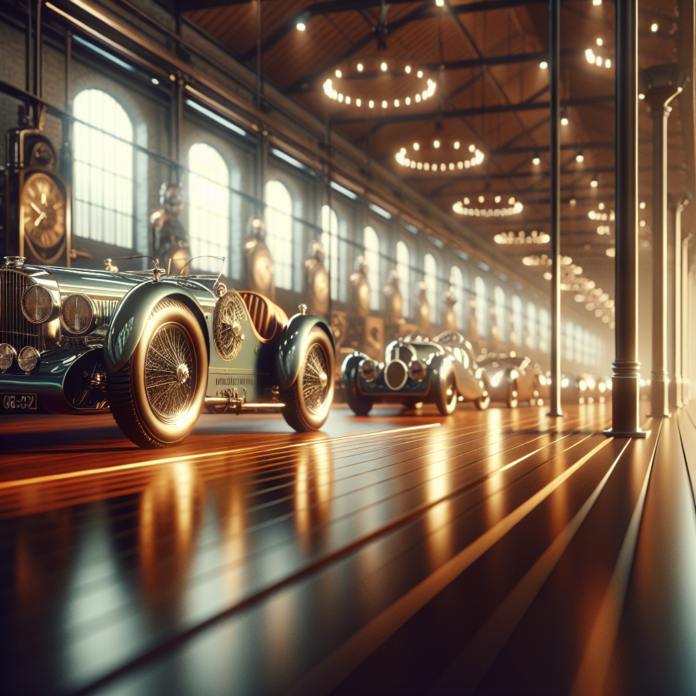
From legendary designs to groundbreaking engineering
From legendary designs to groundbreaking engineering—exploring the world’s most celebrated vintage automobiles.
Classic cars are more than just vehicles; they are rolling pieces of art that encapsulate the history, technology, and aesthetics of their times. This article delves into the world of classic cars, exploring their design, engineering, and the indelible mark they have left on both culture and the automotive industry.
- The Evolution of Car Design
- Engineering Breakthroughs
- Iconic Models and Their Stories
- Cultural Impact of Classic Cars
- The Art of Collecting Classic Cars
- The Future of Classic Cars
- Conclusion
The Evolution of Car Design
Classic cars are often celebrated for their aesthetic appeal and design innovation. From the sleek lines of the Jaguar E-Type to the rugged charm of the Ford Mustang, the design of these vehicles often reflects the cultural and technological zeitgeist of their era.
- The 1960s marked a significant era in car design with the introduction of the muscle car, characterized by high performance and aggressive styling.
- The elegance of European cars, such as the Mercedes-Benz 300SL with its distinctive gull-wing doors, set a benchmark for luxury and design.
Engineering Breakthroughs
Behind their shiny exteriors, classic cars are also marvels of engineering. Innovations such as the introduction of disc brakes or the development of overhead cam engines have had lasting impacts on the automotive industry.
- The Chevrolet small-block engine, introduced in the 1950s, revolutionized performance standards and remains influential.
- Advancements in materials, such as the use of lightweight aluminum and fiberglass, helped boost the performance and efficiency of classic cars.
Iconic Models and Their Stories
Some classic cars are famed not just for their looks and technology but also for the stories they carry. Vehicles like the Aston Martin DB5, immortalized by James Bond, or the Volkswagen Beetle, a symbol of the 60s counterculture, are examples.
- The Ford Model T, often regarded as the car that “put America on wheels,” was a pioneer in mass-produced vehicles, making cars accessible to the average American.
- The Ferrari 250 GTO, now one of the most expensive classic cars in the world, is revered for its combination of stunning aesthetics and exceptional performance.
Cultural Impact of Classic Cars
Classic cars often hold a mirror to the societal values and trends of their times. They have been featured in countless films, television shows, and even music videos, becoming symbols of status, innovation, and rebellion.
- The Mini Cooper’s role in the 1969 film “The Italian Job” showcased its agility and became a symbol of British ingenuity.
- The Cadillac Eldorado and its association with Elvis Presley exemplify the opulence of the 1950s American pop culture.
The Art of Collecting Classic Cars
Collecting classic cars is a passion for many. Beyond the aesthetic and nostalgic value, these cars are seen as investments. The rarity and historical significance of certain models can drive their prices to astronomical figures.
- The auction of a 1962 Ferrari 250 GTO for $48 million in 2018 set a record for the most expensive car ever sold at auction.
- Collectors often spend considerable sums on restoration to preserve the authenticity and condition of classic cars.
The Future of Classic Cars
As the automotive industry leans towards electric and autonomous vehicles, the role of classic cars is also evolving. While they remain a link to the past, there is a growing interest in retrofitting classic models with modern electric engines, a trend known as “restomodding.”
- Companies like Jaguar Land Rover have started offering electric conversions for their classic models, blending vintage charm with modern sustainability.
- The rise of digital platforms has made the classic car community more accessible, allowing enthusiasts to share their passion and knowledge worldwide.
Conclusion
Classic cars are much more than mere transportation; they are a celebration of automotive history, encapsulating the technological advances, design innovations, and cultural trends of their times. As they continue to captivate collectors and enthusiasts around the world, their legacy is both preserved and transformed. Whether through restoration or modern adaptation, the journey of classic cars is far from over, continuing to influence both the past and the future of the automotive world.
